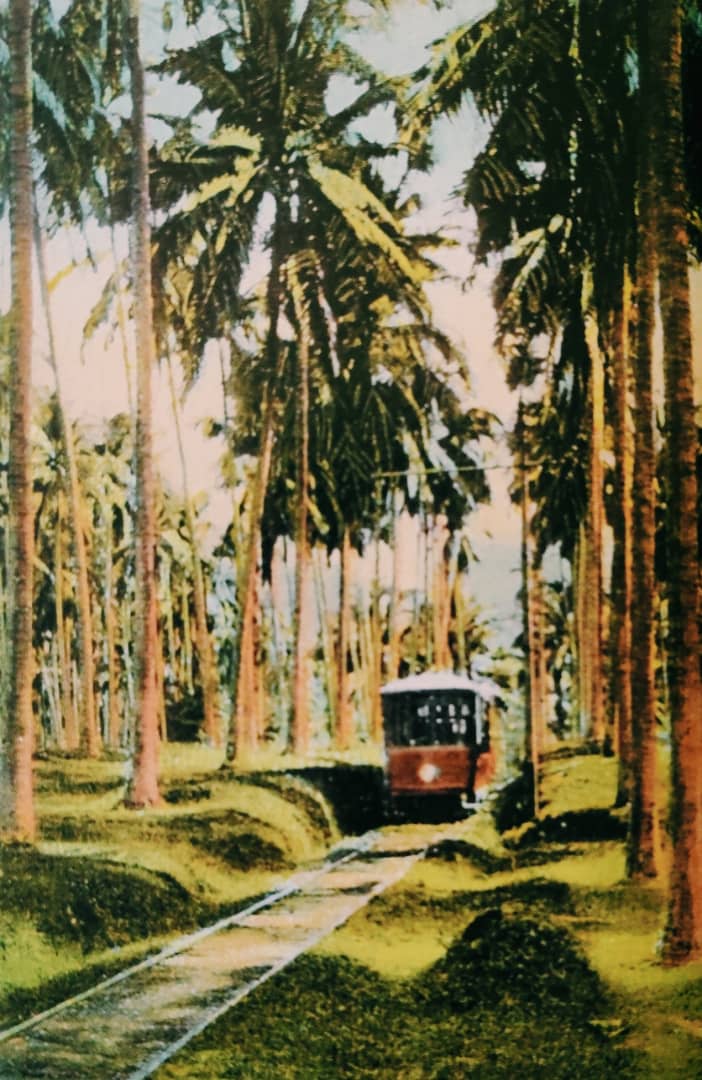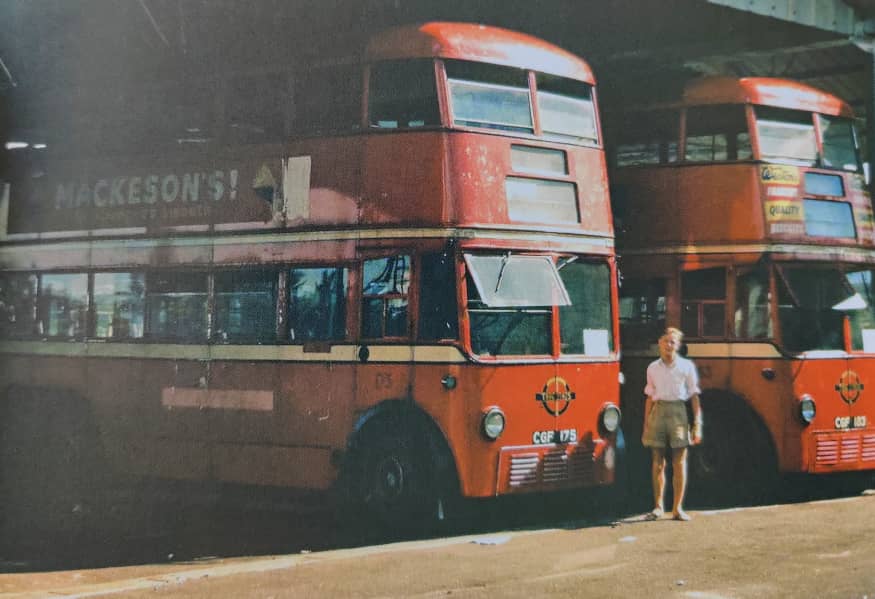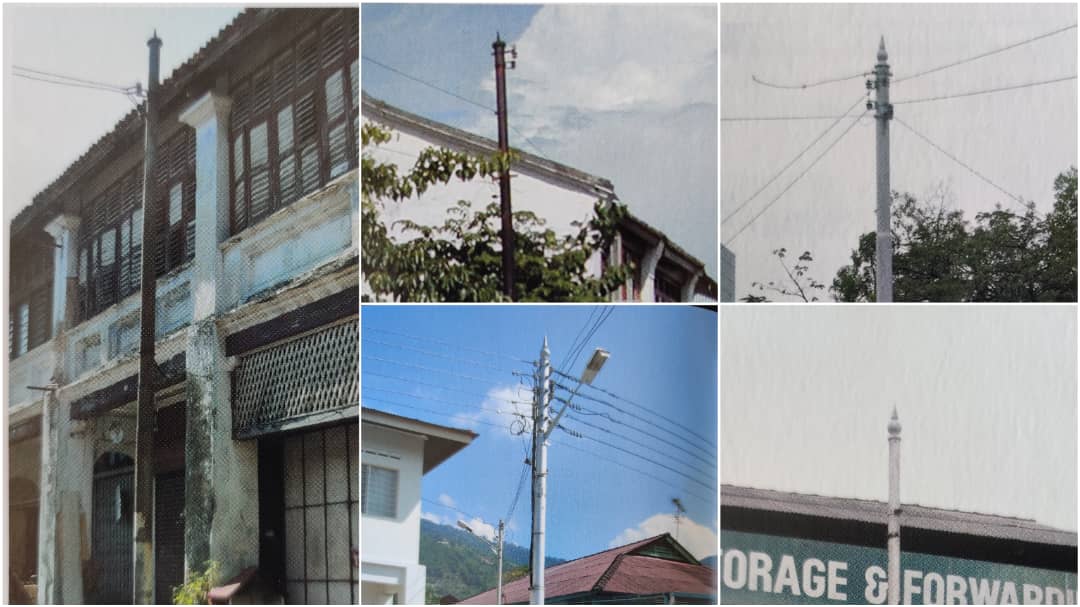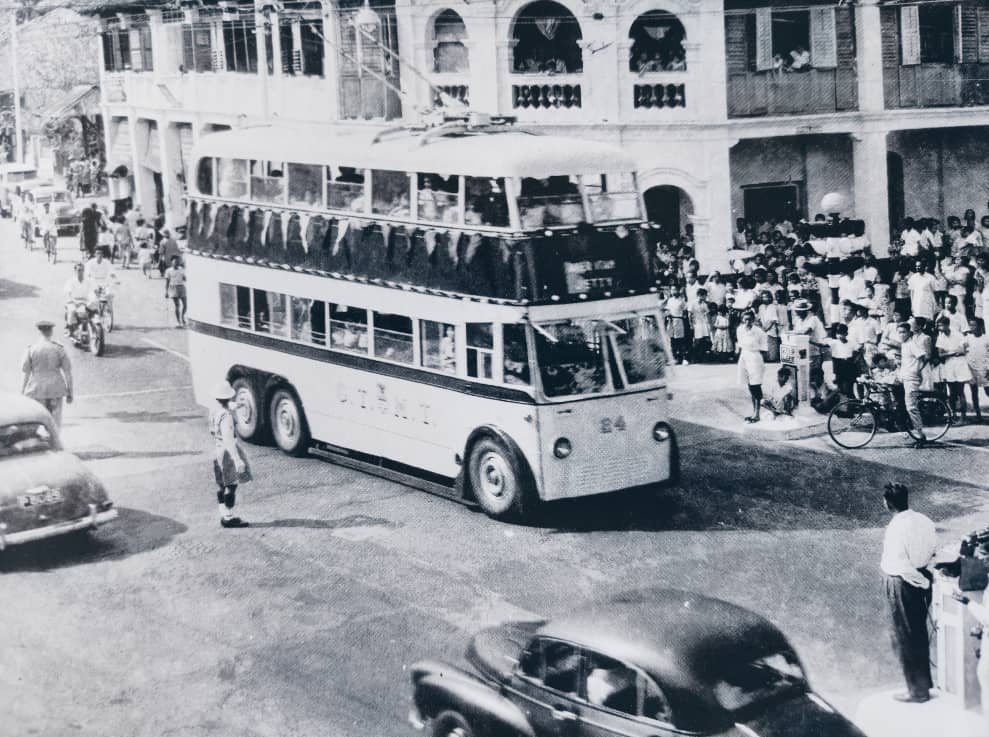Penang used to lead in public transportation. It was among the first urban centres in Southeast Asia to operate steam trams, electric trams & trolleybuses. Pictured is an electric tram through a coconut estate in Ayer Itam countryside.
This is a simple thread of its evolution.
This is a simple thread of its evolution.
Penang's steam trams which began in 1880s were replaced by electric trams in 1906 when the Municipal Commission established its own electrical supply. Fare was 3 cents & first class at 5 cents for 4 km journey.
Similar hop-on hop-off tram still operates today in Lisbon & HK.
Similar hop-on hop-off tram still operates today in Lisbon & HK.
However, the trams didn't stay long. It was replaced by trolleybuses which are electric buses that draws power from dual overhead wires.
The chassis were imported, but the bodies were designed & build in George Town which provided local employment.
The chassis were imported, but the bodies were designed & build in George Town which provided local employment.
Penang once bought five ex-London Transport double- deckers in 1956 as an experiment. It was modified to suit the tropical weather, repainted in yellow & red.
However, these trolley buses proved to be uneconomical due to low fares & the need to have three crew members on board.
However, these trolley buses proved to be uneconomical due to low fares & the need to have three crew members on board.
The end of trolleybuses came around 1959 when diesel motorbuses became a more economic option. The overhead wiring was dismantled fairly quickly but a remnant of this history could still be spotted from these distinctive trolleybus polls at routes which it used to serve.
There used to be a practice of naming the buses after long- serving employees of the Transport Department & they were entitled to free rides on council buses.
Seen here is the department honouring the mechanic Foo Sun Tho at the ceremony unveiled by the Mayor.
Seen here is the department honouring the mechanic Foo Sun Tho at the ceremony unveiled by the Mayor.
There were also 3 main private bus companies which was identified by their colours: Lim Seng Seng Bus Co. Ltd (green), Hin Company Ltd (blue) & Yellow Bus.
A set of charming photos of these buses and the ones operated by the council was featured here: https://says.com/my/lifestyle/old-penang-buses
A set of charming photos of these buses and the ones operated by the council was featured here: https://says.com/my/lifestyle/old-penang-buses
To digress, some of our childhood memories is marked by a fascination with the colourful collection of old bus tickets.
Today, it has become a thing of nostalgia as it is reproduced as washi tapes used in journaling.
Today, it has become a thing of nostalgia as it is reproduced as washi tapes used in journaling.
Since 2007, Penang's public bus service is provided by RAPID Penang but much has changed. Penang ranked 4th in Malaysia with the highest private vehicle registration in 2017.
Meanwhile, public buses ridership has plummeted & the low revenue further disadvantaged its operation.
Meanwhile, public buses ridership has plummeted & the low revenue further disadvantaged its operation.
While Malaysians waste RM 10–20 billion annually on traffic congestion - the public transportation service still have much room for improvement.
However, it won't go far if government policies & city design continue to prioritize and revolve around private vehicles.
However, it won't go far if government policies & city design continue to prioritize and revolve around private vehicles.
Transport experts & mayors around the world are increasing investment & expanding public transportation to improve social equity, health & the resilience of cities.
There is a value in learning from the good old days when the priority was to move more people, not cars.
There is a value in learning from the good old days when the priority was to move more people, not cars.
The importance of public transportation was well- captured in the foreword by Dato' Dr Anwar Fazal, former Sr Regional Advisor of The Urban Governance Initiative of UNDP.
Was inspired to share this thread based on the excerpts from my weekend reading of the book "Penang Trams, Trolleybuses & Railways".
There are more fascinating historical bits and old photographs of Penang in there.
Link for those interested: https://arecabooks.com/product/penang-trams-trolleybuses-and-railways/
There are more fascinating historical bits and old photographs of Penang in there.
Link for those interested: https://arecabooks.com/product/penang-trams-trolleybuses-and-railways/

 Read on Twitter
Read on Twitter












